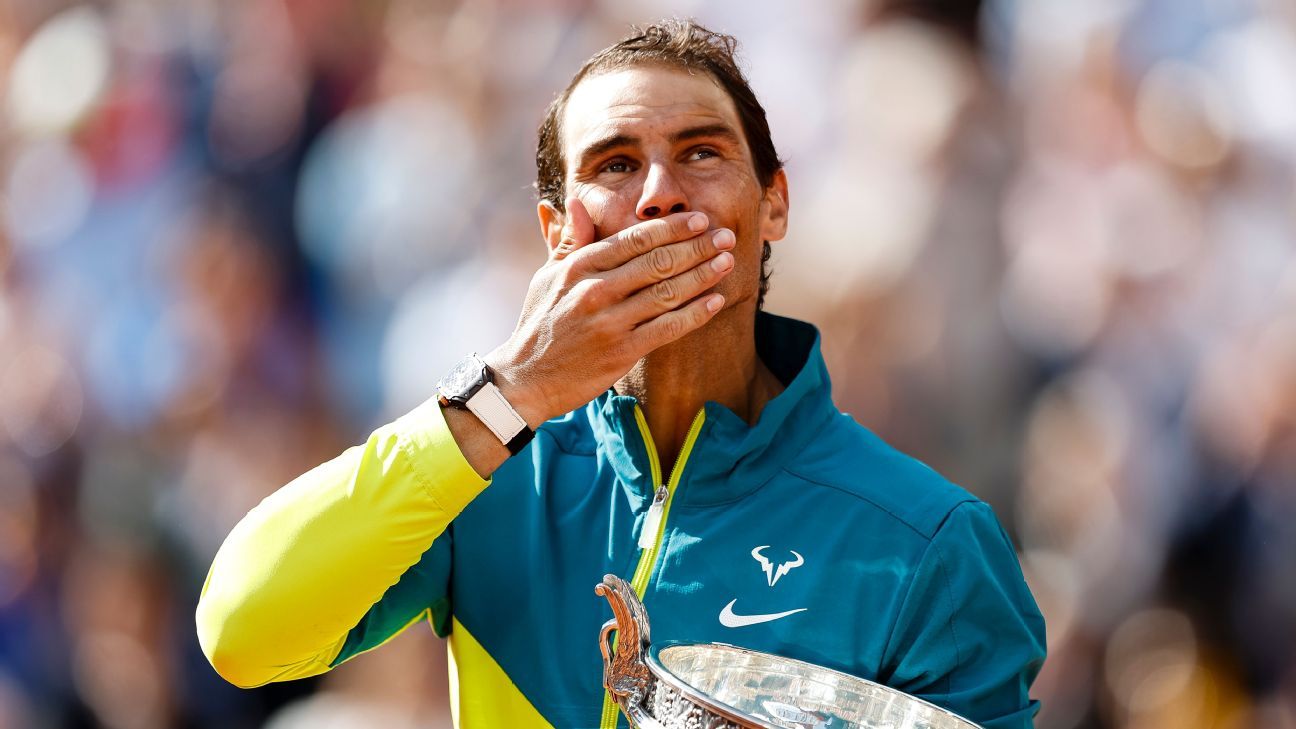Products You May Like
LONDON — Rafael Nadal on Saturday said the procedure he had on his chronic foot injury after Roland Garros has meant he is largely pain-free, but he is unsure how long the treatment will be effective.
“The feeling and overall feelings are positive, no, because I am in a positive way in terms of pain, and that’s the main thing,” Nadal said.
Nadal has been suffering with Muller-Weiss syndrome, a rare condition which causes chronic pain in his left foot. He numbed the injury at Roland Garros by injecting the nerve to allow him to play.
The injury causes him to be in pain when walking, let alone playing. After Roland Garros, Nadal underwent a radiofrequency nerve ablation, which targets the specific nerve leading to the painful area of his foot.
At the time, Nadal said the success of that procedure would dictate whether he was going to play at Wimbledon, as he was not willing to again undergo daily injections. If the procedure didn’t work, Nadal said he then would have either required major surgery or would have looked to alternative solutions or outcomes.
However, it has proven effective enough to allow Nadal to continue his charge for a calendar Grand Slam, having already taken the Australian and French Open titles this year.
“Well, is obvious that if I am here, it’s because things are going better. If not, I would not be here,” Nadal said. “So quite happy about the things, how evolved. I can’t be super happy because I don’t know what can happen.
“First of all, I can walk normal most of the days, almost every single day. That’s for me the main issue. When I wake up, I don’t have this pain that I was having for the last year and a half, so quite happy about that. And second thing, practicing. I have been in overall better, honestly, no? Since the last two weeks, I didn’t have not one day of these terrible days that I can’t move at all. Of course, days better; days a little bit worse.”
Nadal has won 22 Grand Slam singles titles and is aiming to win his third Wimbledon crown entering Tuesday’s first-round match against Francisco Cerundolo.
He said he will try to park any thoughts of the foot injury over the next fortnight.
“I can’t tell you if I going to be in that positive moment for one week, for two days, or for three months,” Nadal said. “Of course, the treatment that I did, didn’t fix my injury. Not improving my injury at all but can take out a little bit the pain. That’s the main goal.
“Sometimes the things in the medical world, mathematics is not predictable 100%. But in theory that can help the foot because it’s about the nerve. You touch the nerve, so then the nerves is like asleep in some way for a while, but then recovers. So how long the nerve is going to be that way, I can’t tell you. It’s something that we need to discover.”
But this procedure is a good step, and has brought a smile back to Nadal’s face.
“Today I feel good. Happy for that,” Nadal said. “… Tennis is the second part of your life. Probably the most toughest part is having pain on your life on a daily basis. The problem that I have is I have pain walking every single day. That sometimes affects you to your happiness and in some way the positive and how the attitude is not that positive all the time.
“[It is] positive now. Let’s see what can happen in the future.”
